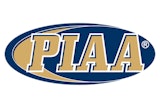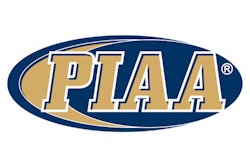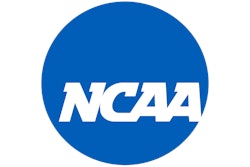A mission-driven approach, combined with the rise in athletic participation and an increasingly competitive market for students, has led more private schools to significantly expand athletic space
The past decade has seen an unprecedented expansion of high school programs and facilities. It's a trend largely driven by three factors - the rise in girls' sports participation, increased attention to the mission of interscholastic athletics and increased competition between schools as geographically based attendance boundaries have been loosened by initiatives such as School Choice.
While there has been some focus on the challenges that this evolution has presented to public high schools, there has been limited discussion of the impact it has had on private secondary schools. When addressing these issues, private institutions - whether religious (most often Catholic) or nonsectarian - face many of the same challenges as public schools, in addition to a distinct set of issues particular to the private sector.
The Mission
Unlike their public counterparts, which are typically charged with providing education to a geographically defined community, private schools are mission-driven institutions that are supported by specific philosophies and interest groups. Private schools attract students based on the values, mission, philosophy and special opportunities (including athletics) these schools offer. Increasingly, they have integrated sports into their educational philosophy so thoroughly that participation in interscholastic competition has shifted from an opportunity to a requirement.
Private high schools face singular challenges in meeting the needs of this increasing number of participants. Several factors impact the mission of a private school - the values of the institution, commitments made to members of the school community and market position - of which the latter is unique to private schools. All of these elements must be weighted with respect to staffing, funding and facilities to appropriately allocate available resources. For example, a private school may be committed to holistic education - referred to as body, mind and spirit - and therefore must make investments in each of those areas to remain consistent with the vision of the institution. In any case, the mission can have a dramatic impact on private schools' recruitment of students. The allocation of resources affects not only the school's ability to meet the vision, but the attractiveness of the school to prospective students as well.
For private schools, the availability of resources can differ significantly from that of their public counterparts. In Colorado, for instance, public schools have begun entering into corporate sponsorship deals to supplement money available for non-academic programs, due to a shortfall of funding from public sources. In the case of private schools, there is increased flexibility to reallocate funding to various school components. This flexibility creates additional challenges to remain consistent to the mission of the institution and balance academic and non-academic needs, and increases reliance on fund-raising. The focus on reconciliation of the demands of the schools and the mission cannot be understated.
In addition to weighing internal demands for resources, private institutions must consider the allocation decisions of their competitors. A school's athletic conference has a dramatic effect on the nature of competition for which each school must prepare. For example, the New England-based Independent School League's mission states that its separate institutions are "striving together through athletic competition to achieve the highest degree of integrity, sportsmanship, fair play and mutual respect in preparation for good citizenship and leadership in society." The values of the different conferences range from a loose confederation of schools with limited rules to one with specific parameters regarding academic requirements and practice time. Differences between conferences impact the quality of competition, as well as the demand for institutional resources. It is best for private schools to actively seek out other schools with similar missions to allow them to manage the competing demands of their own school.
Often, mission- and conference-related issues lead to concerns about coaching. The traditional paradigm at many private boarding schools is the "triple-threat" model, where members of the faculty monitor a dorm, coach sports and teach academic subjects. Even at day schools, many faculty members are asked to coach sports in addition to academic responsibilities. The benefits of this model are that it increases the sense of community and reinforces institutional culture, ensures athletic programming that is consistent with the values of the school, limits turnover of coaches and can lower costs even with additional stipends for coaching duty. The weaknesses, aside from the obvious strain additional responsibilities place on teachers, are scheduling conflicts and the difficulty in filling all coaching positions with appropriately qualified coaches.
The demand for quality coaching is ever-increasing even as the pool of applicants seems to shrink, causing conflicts in trying to balance quality competition and training with academic demands. Clear direction needs to be given to all coaches regarding the objectives of the athletics program. For example, does the institution focus on participation over competitiveness? Does the school want to focus on requiring students to be involved in a variety of sports? Are students encouraged to train during the offseason for a specific sport? Whatever the intent of the school, it should be communicated clearly and consistently to coaches of all sports offerings.
Competition for Students
According to the U.S. Department of Education, the number of private schools has increased by 300 percent over the last 30 years. At the same time, the number of private secondary school students has remained at around 1.3 million, resulting in an average per-private school enrollment reduction. Further data shows that since 1990, the number of students enrolled in private school has remained relatively constant, while the number of schools has increased by more than 17 percent. Competition among private schools for students, therefore, has increased substantially.
When these demographic pressures combine with increasingly active and savvy students and parents, it results in a highly competitive marketplace. This frequently causes institutions to focus even more closely on a mission-oriented approach, communicating to prospective families the school's values and educational objectives. The added scrutiny results in private schools enlarging the scope of opportunities, from comprehensive in- and out-of-classroom education to more personalized attention to enrolled students.
In such circumstances, it is clear why private schools tend to require more resources than public schools. Competition between private schools drives the need to increase resources to provide programs and facilities that will attract students. The frequent desire to increase curricular and extracurricular opportunities, while simultaneously reducing faculty-to-student ratios, generates increased staffing and facility needs. The pressure for resources is seen in data compiled by the Department of Education Schools and Staffing Survey, which shows the average annual cost per student of private secondary schools to be $5,500, with some boarding schools exceeding $20,000 per year. Those with sufficient resources are able to meet their objectives and attract targeted students, while others cannot keep up with their competitors. Successful schools are those that have clearly articulated their vision, met corresponding staffing and facility needs, and attracted students to a holistic educational experience.
Within this landscape, athletics is one of many competing interests that are important to a holistic education attractive to prospective students and their families. While this approach may differentiate private schools from many public schools, it also means a host of pressures to do more than provide a place to play sports. Private schools are still called on to attract the best coaches and field competitive teams, but additionally, to provide high-quality facilities for a diversity of offerings, including noncompetitive recreational and healthy lifestyle-development opportunities.
Opportunity Costs
Prior to the enactment of Title IX in 1972, approximately 294,000 girls participated in athletics at the high school level. Today, the number of girls participating in interscholastic sports programs has surpassed 2.47 million. All other developments aside, this astonishing 800 percent increase in girls' participation has had the most profound impact on athletics programs at both public and private schools. Private schools, however, have borne a disproportionate share of difficulties since many were previously all-male institutions before becoming coed schools over the last 25 years. In such circumstances, private schools have had to allow for double the number of teams fielded by the athletic program, including the conversion of indoor facility space for the addition of girls' locker and rest room space. At one time, administrators assumed that creative scheduling might solve the need for additional venues. But once the totality of the impact on support facilities such as locker rooms, weight training facilities, equipment storage, meeting rooms and coaches' offices was taken into account, it became clear that scheduling would not be an adequate solution to the problem.
The limited size of most private school campuses has driven many schools to seek off-site solutions to crowded competition and indoor and outdoor practice facilities. Unfortunately, off-site facilities are also being sought as a solution to overcrowding at other schools' facilities, as well as in youth leagues and community recreation programs. Participation rates among all of these groups is growing rapidly, making off-site options scarce.
In response, some communities are forming creative public-private partnerships to respond to increased demand. In Maryland, the Maryland Soccer Foundation is currently working with the state and county, as well as with several leagues and sport clubs, to develop a massive sports complex that includes not only soccer fields, but ice rinks, indoor basketball courts and a range of other facilities and amenities. Three similar developments are in various stages of planning throughout the Washington, D.C., metropolitan area.
More and more, however, prep schools' response to such limitations is to construct increasingly spectacular athletic facilities, of substantially higher quality and including greater amounts of dedicated space than seen in most public schools. A recent survey of indoor facilities at 20 New England private secondary schools yielded a range of sizes from 14,000 to 284,000 square feet, with an average of 87,000 square feet. Per private school student, the survey showed a range of 54 to 286 square feet of indoor athletic space. A similar study of 14 Texas private schools returned a range of 15,000 to 72,000 square feet, with an average of 35,000 square feet. The square-feet-per-student figure fluctuated significantly within the spread of 12 and 257. For comparison purposes, the average public high school may have between 15,000 and 25,000 square feet of indoor athletic space, or about 7 to 50 square feet per student. Unquestionably, there are also large disparities in the amount of athletic space between private schools. However, not surprisingly, those schools identified as being substantially behind in these surveys were all proposing athletic facility expansions.
Capital investment in these new comprehensive indoor facilities ranges from $4 to $20 million in construction costs, plus a corresponding increase in annual operating costs. Again, private schools' focus on mission is responsible in part for the grandiose nature of some recent designs. Architects such as Mark Jolicoeur, an associate principal with Perkins & Will, a nationally recognized firm in the planning and design of educational facilities, are well aware of the complicated nature of design issues.
"Private education institutions are interested in constructing athletic facilities that reinforce the character and mission of the school, but that also provide a flexible environment capable of adapting to changing educational programs," says Jolicoeur. "The resulting facilities must provide for a greater variety of athletics and complete parity of activities for both women and men."
Design responses to these complex issues must provide schools flexibility to meet the needs of tomorrow, for few would have seen the current explosion in participation as little as 30 years ago. Yet, because of the substantial costs involved, monies must be allocated carefully and evaluated in the greater context of the school, as a substantial investment in athletic facilities must be weighed with other campus improvements. Even when facility planners have done their homework and improvements have been carefully conceived, the benefits have been effectively communicated and funding is available, such buildings must be designed to maximize the value of the investment.
For all the success stories in the prep school realm, a number of private schools have been unable to fully develop or execute their vision, resulting in a competitive disadvantage in terms of both recruitment of students and on-the-field competitiveness. It cannot be stressed enough the importance of developing a clear mission for the school and its athletic program. Once completed, decisions regarding recruitment, conference alignment, coaching and facilities are substantially easier as they can be understood in a greater context. Successful building of facilities is a result of:
• Comprehensive planning • Focusing on the mission before results • Involvement of a broad range of constituents • Identifying available resources • Changing programs before facilities • Designing for flexibility • Advertising clearly the 'why' as well as the 'what' and 'how' • Maintaining a clear vision.
The dramatic changes in high school athletics have resulted in the need for new facilities to meet both the growing quality, quantity and diversity of offerings. The increasing sophistication of facilities has flowed from the professional ranks to intercollegiate sports and is now growing at the secondary school level and sometimes earlier. The expectations of athletes and parents have risen dramatically with respect to facilities and coaching quality, both of which are increasingly seen as signs of institutional commitment. For this reason, there is much to be learned from the experiences of successful private schools - more than anything else, that careful planning and consensus-building facilitate these schools' decision-making and consistently pay great dividends.




































